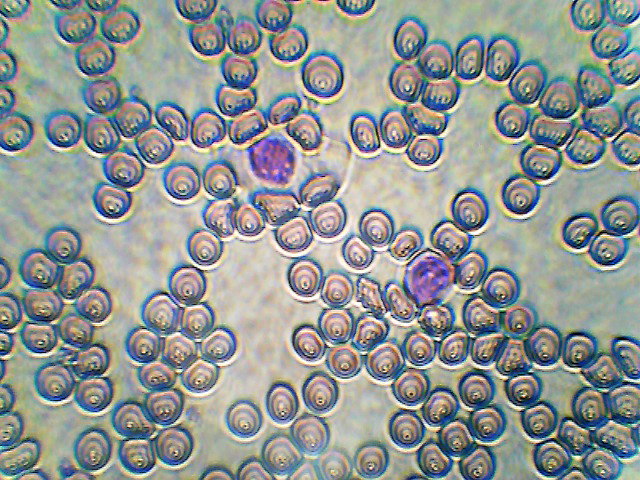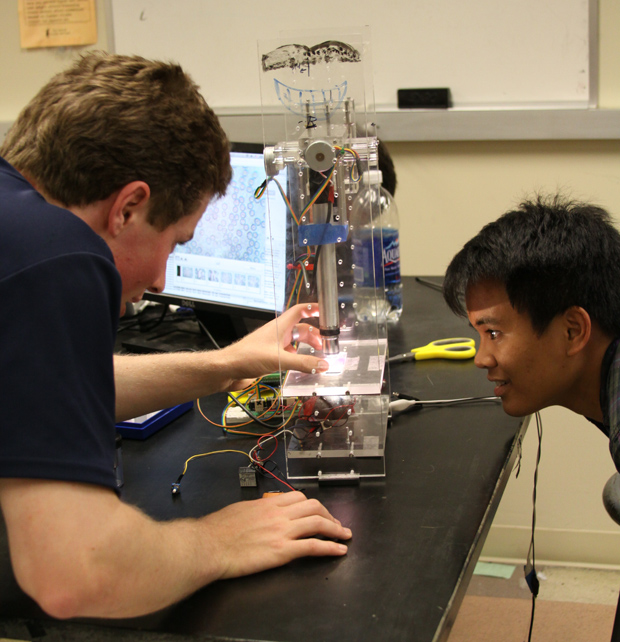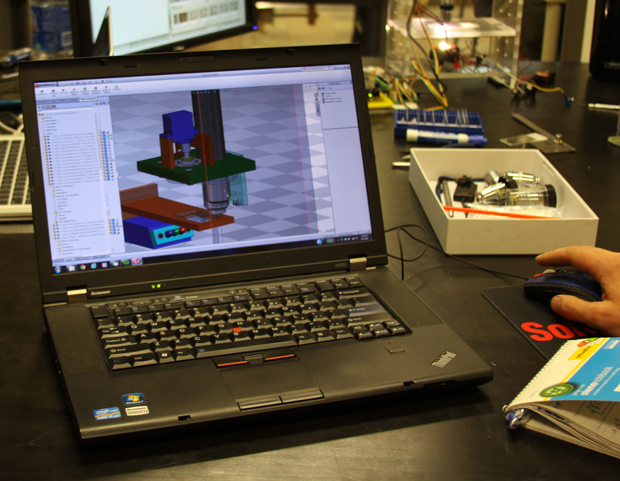
By:
- Ioana Patringenaru
Published Date
By:
- Ioana Patringenaru
Share This:
A Vision to Help
Engineering students design bare-bones microscope for clinics in developing world

Photo by Treyscope Media
Students at the Jacobs School of Engineering are working to develop a cheaper, lighter, multi-function microscope that could be used in clinics in developing countries. Their prototype will be flown to Mozambique this summer and field tested at Universidade Eduardo Mondlane in the country’s capital, Maputo.
Similar microscopes can cause more than $50,000. “We are aiming for under $500,” said Dr. Eliah Aronoff-Spencer, a physician scientist in UC San Diego’s infectious disease department and the project’s sponsor. The low-cost microscope has another advantage: it’s run by a laptop or iPad to which it sends the images it captures. That means physicians can start using and sharing data right away.

Aronoff-Spencer is one of the physicians partnering with Mozambique doctors to improve research, training and technology in the country as part of a five-year, $12.5-million award from the U.S. Medical Education Partnership Initiative. Mozambique badly needs medical equipment, the UC San Diego doctor explained. The country of about 23.5 million residents has less than 1,000 doctors and only two functioning medical schools. It is building two more.
Engineering undergraduates said building the microscope is the best learning experience they’ve had in their years on campus.
“It really brings home all the issues we talk about in class,” said Kyle Stewart, one of the four mechanical engineering seniors working on the device. “All that becomes real when you work on this project.”
Stewart said he had a great internship last summer. “But I didn’t learn anywhere near what I’ve learned from this.”
The students’ goal is to design a three-in-one device that can be used as a brightfield and fluorescent microscope as well as a spectrophotometer to examine everything from blood cells to bacteria. Traditional two-in-one microscopes don’t historically include spectroscopy and can cost more than $50,000.
The students are now on their third prototype for the microscope and estimate there will be at least three more before the quarter is over. The goal is a 6-by-6-by-13 inch box with different trays that activate different kinds of lighting.
Their decision to keep slide trays stationary, and the optics mobile, is what made the device possible, said Leonardo Costello, one of the four students working on the project. In a traditional microscope, it’s the other way around.

Their device uses a CMOS chip in the imaging unit and a full CCD chip to take spectrometry pictures in any position. The ultimate goal is to image objects down to 0.5 microns in diameter. A hair’s breadth is about 100 microns.
The project has become a full-time job for the students, who have been spending eight to 14 hours a day, five days a week, in the lab at EBU II. “It’s to the point where people are surprised if they don’t see us in here,” Stewart joked.
All say they knew they wanted to be engineers from an early age. Stewart has played with LEGOs since he was 6 years old, and learned how to use LEGO Mindstorms as part of a middle school Gifted and Talented Education program. “I’ve always liked making things, so everything pointed to engineering,” he said. He will be attending graduate school at San Diego State University.
Reginald Ballesteros is following in the footsteps of his father, who is a civil engineer. He will be interning at Goodrich Aerostructures this summer. In the fall, he will be going to Santa Clara University to earn a master’s degree in mechatronics.
Costello’s father was a general contractor. Costello, who was home schooled until he came to UC San Diego, often got to spend time with him on the job. The young Costello also spent a lot of time in the family’s garage, building various creations. He accepted a job at North American Repower, a company that specializes in heavy duty natural gas engine technology.
Sean Patno is responsible for much of the user interface and software aspects of the project. He will probably land a job as a software engineer after he graduates, he said.
Dr. Aronoff-Spencer said he has been impressed by the students’ work—and by their work ethic.
“They are working harder than any students I’ve ever seen,” he said.
For more information about the project, go to:
Share This:
You May Also Like
Stay in the Know
Keep up with all the latest from UC San Diego. Subscribe to the newsletter today.


